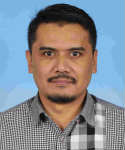| Biography | |
|---|---|
 Prof. Ahmad Zuhairi Abdullah School of Chemical Engineering, Universiti Sains Malaysia, Malaysia |
|
| Title: Conversion of fatty acid distillate into hydrocarbon fuels by nickel-incorporated mesostructured cellular foam catalyst | |
| Abstract: In view of the depletion of oil reserves, shortage of crude oil supply is foreseeable in the near future. Oleochemical industry is known to generate different types of waste materials. Oleochemical wastes, especially fatty acids and fatty acid distillate are seen as renewable fuel sources of the future due to their suitable chemical compositions, renewability and availability to be converted especially by catalytic means to various hydrocarbons. Owing to high molecular weight substances involved in the feed and the need to obtain the desired product compositions in a certain range after the reaction, the catalyst materials should be designed to have high surface area, sufficient framework mesoporosity, high structural strength and narrow pore size distribution. Mesostructured cellular foam (MCF) based solid catalysts were specifically investigated in this work. The MCF mesoporous support was synthesized using a sol gel method with tetraethyl ortho silicate (TEOS) amounts ranging from 9.2 to 16 mL and then aged for between 1 to 3 days. Nicked-incorporated MCF catalysts were subsequently prepared using a precipitation method to give Ni loadings of less than 20% and then aged between 1-3 days. The physicochemical properties of the MCF catalysts were then elucidated by means of N2-adsorption, energy dispersive X-ray (EDX), transmission electron microscopy (TEM), Fourier-transformed infrared (FTIR), thermal gravimetric (TGA) and H2-temperature programmed reduction (H2-TPR) methods. The catalytic activity was measured based on the semi-batch conversion of palmitic acid (PA) by the catalyst (10 % wcat/wPA) carried out at 300 oC for up to 6 h under nitrogen flow. The window pore size of the MCF generally increased with increasing aging time. The increase in the TEOS amount up to 12.5 mL evidently decreased the pore solume, cell size and window pore size due to the increasing thickness of the MCF mesostructure. The incorporation of nickel generally led to slight decreases in the textural parameters. NiMCF(9.2T-3D) that was prepared with 9.2 mL TEOS and aged for 3 days was the most active catalyst, attributed to its high nickel content (17.6%) with the smallest particle size. The palmitic acid conversion increased with increasing reaction temperature, reaction time and catalyst loading. Furthermore, the yield of 1-pentadecene in the product showed corresponding increases while those of n-pentadecane remained relatively constant. This was attributed to the formation of more CO gas that could inhibit the palmitic acid decarboxylation reaction. 30.9 % n-pentadecane yield and 33.7% 1-pentadecane yield were recorded. Keywords: Palm fatty acid distillate; decarboxylation; hydrocarbon; renewable fuel; Ni-loaded MCF catalyst; synthesis conditions; physicochemical characteristics. | |
| Biography: Professor Dr Ahmad Zuhairi Abdullah is currently the Deputy Dean (Research, Postgraduate & Network) at School of Chemical Engineering, Universiti Sains Malaysia. He received his PhD from Universiti Sains Malaysia in PhD (2004) in the field of chemical engineering. His research works mostly encompass the use of novel functionalized nanoporous materials as catalysts in waste treatment, oleochemical conversions, green technology and production of renewable energy sources. He is among the pioneer researchers in the world to focus on the use of ultrasound to accelerate heterogeneous catalytic processes. He is the recipient of several innovation and publication awards based on his research works. His research expertise is often sought after for the assessment of Environmental Impact Assessment (EIA) reports on proposed strategic commercial projects such as oil refinery, petrochemical complex, sanitary landfill, smelting plant, used acid lead battery, paper mill etc. Various industrial problems have been successfully solved through his consultancy projects. He has been involved in the propagation of science and technology through more than 200 refereed publications in journals and book chapters mainly as the main author, and also involves as a technical committee member to nearly 110 international scientific conferences held across the globe. Many invitations on various roles have also been received locally and internationally to share his research experience with government officers, research scientists, junior researchers and school children. The objectives of the events vary from the latest development in nanoporous materials research, critical research skills, understanding science, promotion of sustainability, community awareness, carrier development to the understanding of policy and regulatory aspects. He is an academic external assessor to UniMAP and UniKL-MICET for their undergraduate and doctoral program, respectively while acted as an assessor for the selection of National Centre of Excellence (HICoE) in Malaysia. He also acts as an article reviewer to more than 100 different leading international journals in his area of expertise. In addition, he is an evaluator to research proposals received from the university, local ministries as well as international scientific associations in the USA, Oman, Qatar and Chile. He is one of the recipients of the Top Research Scientist Malaysia 2014 award. His h-index (Scopus) currently stands at 48. | |
